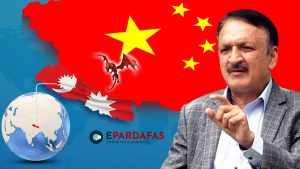
Jungle between Colombia and Panama becomes highway for migrants from around the world

Once nearly impenetrable for migrants heading north from Latin America, the jungle between Colombia and Panama this year became a speedy but still treacherous highway for hundreds of thousands of people from around the world.
Driven by economic crises, government repression and violence, migrants from China to Haiti decided to risk three days of deep mud, rushing rivers and bandits. Enterprising locals offered guides and porters, set up campsites and sold supplies to migrants, using color-coded wristbands to track who had paid for what.
Enabled by social media and Colombian organized crime, more than 506,000 migrants – nearly two-thirds Venezuelans – had crossed the Darien jungle by mid-December, double the 248,000 who set a record the previous year. Before last year, the record was barely 30,000 in 2016.
It wasn’t only in Latin America.
The number of migrants crossing the Mediterranean or the Atlantic on small boats to reach Europe this year has surged. More than 250,000 irregular arrivals were registered in 2023, according to the European Commission.
A significant increase from recent years, the number remains well below levels seen in the 2015 refugee crisis, when more than 1 million people landed in Europe, most fleeing wars in Syria, Iraq and elsewhere. Still, the rise has fed anti-migrant sentiment and laid the groundwork for tougher legislation.
Earlier this month, the British government announced tough new immigration rules aimed at reducing the number of people able to move to the U.K. each year by hundreds of thousands. Authorized immigration to the U.K. set a record in 2022 with nearly 750,000.
A week later, French opposition lawmakers rejected an immigration bill from President Emmanuel Macron without even debating it. It had been intended to make it easier for France to expel foreigners considered undesirable. Far-right politicians alleged the bill would have increased the number of migrants coming to the country, while migrant advocates said it threatened the rights of asylum-seekers.
In Washington, the debate has shifted from efforts early in the year to open new legal pathways largely toward measures to keep migrants out as Republicans try to take advantage of the Biden administration’s push for more aid to Ukraine to tighten the U.S. southern border.
The U.S. started the year opening limited spaces to Venezuelans – as well as Cubans, Nicaraguans and Haitians – in January to enter legally for two years with a sponsor, while expelling those who didn’t qualify to Mexico. Their numbers dropped somewhat for a time before climbing again with renewed vigor.
Venezuelan Alexander Mercado had only been back in his country for a month after losing his job in Peru before he and his partner decided to set off for the United States with their infant son.
Venezuela’s minimum wage was the equivalent of about $4 a month then, while 2.2 pounds (a kilogram) of beef was about $5, said Angelis Flores, his 28-year-old wife.
“Imagine how someone with a salary of $4 a month survives,” she said.
Mercado, 27, and Flores were already on their way when in September the U.S. announced it was granting temporary legal status to more than 470,000 Venezuelans already in the country. Weeks later, the Biden administration said it was resuming deportation flights to the South American nation.
Mercado and Flores hiked the well-trod trail through the jungle, managing to push through in three days. Flores and their son, in particular, got very sick. She believes they were infected by the contaminated water they drank along the way.
“There was a body in the middle of river and the ‘zamuros’, those black birds, were eating it and picking it apart … all of that was running in the river,” she said.
For Mercado and Flores, the journey accelerated once they left the jungle. In October, Panama and Costa Rica announced a deal to speed migrants across their countries. Panama bused migrants to a center in Costa Rica where they were held until they could buy a bus ticket to Nicaragua.
Nicaragua also seemed to opt for speeding migrants through its territory. Mercado said they crossed on buses in a day.
After discovering that Nicaragua had lax visa requirements, Cubans and Haitians poured into Nicaragua on charter flights, purchasing roundtrip tickets they never intended. Citizens of African nations made circuitous series of connecting flights through Africa, Europe and Latin America to arrive in Managua to start travelling overland toward the United States, avoiding the Darien.
In Honduras, Mercado and Flores were given a pass from authorities allowing them five days to transit the country.
Adam Isacson, an analyst tracking migration at the Washington Office on Latin America, said that Panama, Costa Rica and Honduras grant migrants legal status while they’re transiting the countries, which have limited resources, and by letting migrants pass legally the countries make them less vulnerable to extortion from authorities and smugglers.
Then there are Guatemala and Mexico, which Isacson called the “we’re-going-to-make-a-show-of-blocking-you countries” attempting to score points with the U.S. government.
For many that has meant spending money to hire smugglers to cross Guatemala and Mexico, or exposing themselves to repeated extortion attempts.
Mercado didn’t hire a smuggler and paid the price. It was “very difficult to get through Guatemala,” he said. “The police kept taking money.”
But that was just a taste of what was to come.
Standing outside a Mexico City shelter with their son on a recent afternoon, Flores recounted all of the countries they had traversed.
“But they don’t rob you as much, extort you as much, send you back like when you arrive here to Mexico,” she said. “Here the real nightmare starts, because as soon as you enter they start taking a lot of your money.”
Mexico’s immigration system was thrown into chaos on March 27, when migrants held in a detention center in the border city Juarez, across from El Paso, Texas, set mattresses on fire inside their cell in apparent protest. The highly flammable foam mattresses filled the cell with thick smoke in an instant. Guards did not open the cell and 40 migrants died.
The immigration agency’s director was among several officials charged with crimes ranging from negligence to homicide. The agency closed 33 of its smaller detention centers while it conducted a review.
Unable to detain many migrants, Mexico instead circulated them around the country, using brief, repeat detentions, each an opportunity for extortion, said Gretchen Kuhner, director of IMUMI, a nongovernmental legal services organization. Advocates called it the “politica de desgaste” or wearing down policy.
Mercado and Flores made it all the way to Matamoros, across the border from Brownsville, Texas, where they were detained, held for a night in an immigration facility in the border city of Reynosa and then flown the next morning 650 miles (1046 kilometers) south to Villahermosa.
There they were released, but without their cell phones, shoelaces and money. Mercado had to wait for his brother to send $100 so they could start trying to make their way back to Mexico City through an indirect route that required them to travel by truck, motorbike and even horse.
In late November, they had just made it back to Mexico City again. This time Mercado was unequivocal: They would not leave Mexico City until the U.S. government gave them an appointment to request asylum at a border port of entry.
“It is really hard to make it back here again,” he said. “If they manage to send me back again I don’t know what I would do.”












Comments